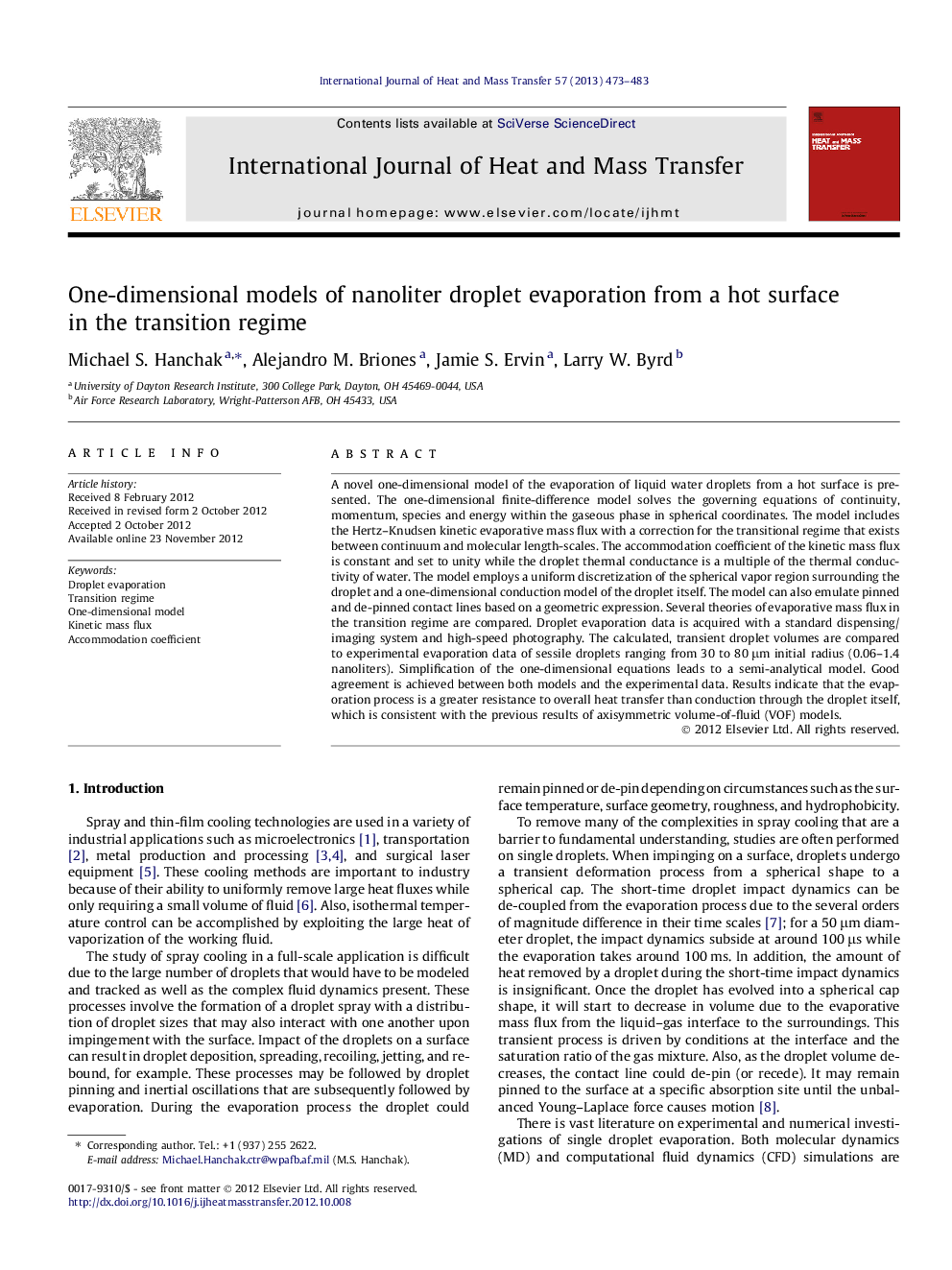| Article ID | Journal | Published Year | Pages | File Type |
|---|---|---|---|---|
| 7058983 | International Journal of Heat and Mass Transfer | 2013 | 11 Pages |
Abstract
A novel one-dimensional model of the evaporation of liquid water droplets from a hot surface is presented. The one-dimensional finite-difference model solves the governing equations of continuity, momentum, species and energy within the gaseous phase in spherical coordinates. The model includes the Hertz-Knudsen kinetic evaporative mass flux with a correction for the transitional regime that exists between continuum and molecular length-scales. The accommodation coefficient of the kinetic mass flux is constant and set to unity while the droplet thermal conductance is a multiple of the thermal conductivity of water. The model employs a uniform discretization of the spherical vapor region surrounding the droplet and a one-dimensional conduction model of the droplet itself. The model can also emulate pinned and de-pinned contact lines based on a geometric expression. Several theories of evaporative mass flux in the transition regime are compared. Droplet evaporation data is acquired with a standard dispensing/imaging system and high-speed photography. The calculated, transient droplet volumes are compared to experimental evaporation data of sessile droplets ranging from 30 to 80 μm initial radius (0.06-1.4 nanoliters). Simplification of the one-dimensional equations leads to a semi-analytical model. Good agreement is achieved between both models and the experimental data. Results indicate that the evaporation process is a greater resistance to overall heat transfer than conduction through the droplet itself, which is consistent with the previous results of axisymmetric volume-of-fluid (VOF) models.
Related Topics
Physical Sciences and Engineering
Chemical Engineering
Fluid Flow and Transfer Processes
Authors
Michael S. Hanchak, Alejandro M. Briones, Jamie S. Ervin, Larry W. Byrd,
